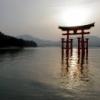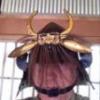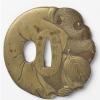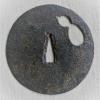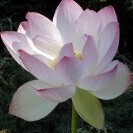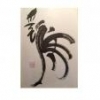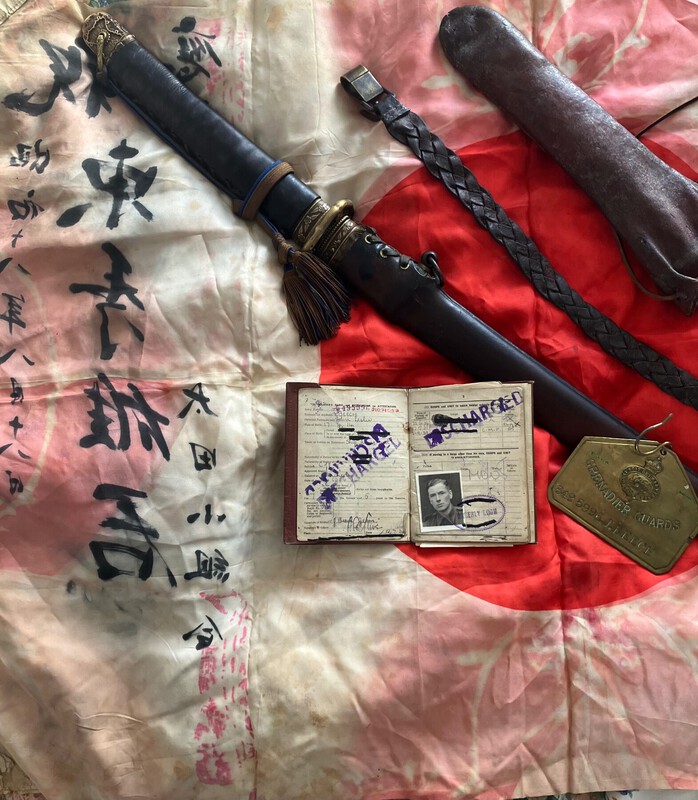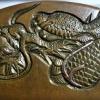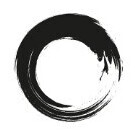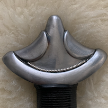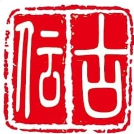Leaderboard
Popular Content
Showing content with the highest reputation on 10/27/2024 in all areas
-
A bit late to the show but these are among my favourites. I didn't what to overload with images so my two Onin tsuba didn't get in! 1 Six Ken Umetada Mumei 1550 Papered 2 Moon amd Pines Owari Nobuie 1600 3 Hanabishi Tosho Mumei 1500 Papered 4 Oxalis Tosho Mumei 1525 5 Pines and Waves Akasaka Mumei 1725 Papered (late but nice) 6 Crossed hats Owari Toda Hikozaemon 1525 7 Rain Katchushi Mumei 1450 8 Plumb and Oxalis Katchushi Mumei 14758 points
-
For those of you who don't use facebook, this is something I posted there recently, thought it was worth sharing with the board... "Here we Go again… So I don’t really know what to say, to have polished one Go Yoshihiro was an amazing experience, and I thought it was a once in a lifetime deal… turns out, it wasn’t. This is a polish I’ve recently completed on a katana papered tokubetsu-hozon to ‘Den Go’. Having studied Go for many years, handled several of his blades in Japan, and now completing my second polish on his work, I feel I’m developing a good sense of his style. There is a paradox in his blades, they're both controlled to the highest degree, and yet completely wild, vivid, and natural. This is a very interesting example of his work, in some ways it’s quite different to the previous one I worked on, but they both share unmistakable similarities, particularly within the nioi-guchi and the finer areas of grain structure. There’s an incredible amount of depth to the hamon, with layers of contrasting nie blanketed across the entire yakiba. Along the boundary of the hamon the nie is larger and has a mottled appearance, almost like lava flow, but on the inside of the yakiba there is fine ko-nie and nioi hataraki, which floats its way along the blade like cloud formations. This isn’t the kind of hamon that jumps up and slaps you in the face, there’s a subtlety to the nie which takes some time to absorb, but once it sets in, it reveals a vast array of delicate hataraki. The jigane is quite diverse, with a variety of different textures and shades. Some areas show a uniform nashiji-like hada with evenly dispersed ji-nie and fine chikei, while other areas have a larger grain structure mixed with dark patches of steel containing more clustered ji-nie. There are many yubashiri, which appear in all different shapes and sizes, some emanating from the hamon like nebula, and others appearing from nowhere like floating orbs. The boshi isn’t ichimai (which isn't unusual), it’s more like a kaen-style, with streaks of hakikake running from the yokote through to a short kaeri. I wasn’t able to capture everything I wanted to in these pics, I tried my best, but in most places the nie extends from the hasaki all the way to the shinogi in one form or another, and it’s impossible to get it all in. Well anyway, have a look and enjoy!"4 points
-
4 points
-
I believe the Japanese term for this is 樋先下がる (Hisaki-sagaru). It could be giving some direction on school and era, however like John said above then the hi would need to be original. Judging that for me would be very difficult especially on ō-suriage swords. Here is an example on a sword that I have and I am almost certain the hi is added on later.4 points
-
3 points
-
Andrew, can't express how much I admire what you do, and what you are able to do. And what a privilege to have the skill to be chosen for swords like this. Thanks for sharing your journey with us.3 points
-
Dear Bruno. Thank you for sharing this tsuba. While researching a somewhat similar tsuba I came across this, “Shigure-tei” was the mountain retreat of Fujiwara Teika, where he compiled the anthology “Hyakunin Isshu”, and there is a Noh programme titled “Teika”. A traveller monk took shelter from the rain in an abandoned cottage. A lady appeared and guided him to a tombstone coiled up with creepers. It was her grave and she was the princess Noriko, whom Teika loved and grieved her death. The cottage was Shigure-tei and Teika’s soul dwelt in the creepers. The monk recited a sutra for them, which let their soul rest in peace, and they were able to depart for the travel to heaven." All the best.2 points
-
Minh, I know almost nothing about older nihonto, but the saying still stands "Judge the blade, not the mei." A gimei blade can still be valuable because of the workmanship on the blade. You can have accurate mei of a smith, but if the blade is mediocre or poor, it won't sell for much. And, yes, on the other hand there are, and will always be, people out there with money to throw away and no knowledge of what they are buying.2 points
-
Hi Brian thank you for the great forum. I bought the sword and will post info as I get it either 👍🏻 or 😞 . I sent a good donation to show my thanks and appreciation.2 points
-
2 points
-
My wife freaked out having a suit of armour in the hall, but gradually she came to like it there. Now she feels that it somehow guards the house. Actually it's pretty amazing when you start to realize how many materials were used and what skill was involved to fashion the armour into something functional, not too heavy and not too light, which also looks both good and fearsome. And then you start to discover the endless blend and variety of colour and material to be found extant. Instant time slip. And people sometimes comment on it, and ask questions. In some ways the ultimate decoration, the traditional centrepiece of the house of a bushi.2 points
-
I've had this Rinji (type 3) gunto for a while signed by Torio Hiromasa dated 1943. I've read this kind of type 3 koshirae with some brass fittings was a prototype via Ohmura's site and other random places on the internet but also heard that they are simply a variation of the Type 3. Perhaps they were made early in manufacturing of the type 3...or perhaps throughout Type 3 production as an available option? I read in the Type 3 Timeline forum that the Rinji model was thought up by 1941 and not kicked into full roll out until 1943. I also read that blades dated early as 1941 in Rinji Type 3's (could have just used an older blade in a rinji koshirae though) in Bruce Pennington's records. To me the Torio Hiromasa being a 1943 blade could potentially lean away from being a prototype as it's much closer to the 1943 roll out period than the 1941/42 "mock up" periods. I bought mine thinking it was just a variation. Wondering if anyone knows the consensus on these or perhaps seen or come across any other information? First pics are of my Hiromasa and second sword is from a listing a long time ago for a Nagamitsu with type 98 tsuba, likely re-wrapped tsuba and the fittings do look a bit more like painted rather than brass. Last one is from an NMB post in 2013 where it was said it's a variation rather than from a prototype production round. Thanks in advance for any insights!1 point
-
Greetings sword mavens! In case you cannot make it to the Dai Token Ichi in 2024, there is always next year! At the recent meeting of the National Commercial Sword Dealer's Association, the organization behind the Dai Token Ichi, the dates for 2025 were confirmed. It will be the first weekend in November, so Saturday, November 1st and Sunday, November 2nd! Lots of notice in advance for you to make your plans! Best Regards, Robert Hughes Keichodo1 point
-
1 point
-
1 point
-
That's something considerably more rare. Most continental guards are Chinese crossguard type until 12-14th century when you can start finding the early "tsuba" form. There are however exceptions - this is 10th century continental tsuba. Its obviously considerably more narrow compared to 14th century examples and bears some limited similarity to Kofun examples. Of note here the iron habaki bears the same edge decor as the tsuba and was made by the same hand, that of a swordsmith. By comparison soft metal habaki and guards would likely be a specialized trade.1 point
-
1 point
-
One needs a naked sword shot directly from above to see sugata with minimal lens distortion, example of activity etc. It seems to be in modern polish, should not be too much a problem to roughly understand what it is. By itself bohi like this is not a strong-specific kantei feature unless someone wants to enlighten me.1 point
-
1 point
-
Strictly speaking you could only definitively call a blade a tachi if it is signed tachi mei. A katana is signed on the other side of the nakago. Once suriage it is not possible to make this distinction any more. However a mumei blade in tachi fittings will be called a tachi by most ( but you can find katana mei blades in tachi fittings also ). Most ( not all ) pre muromachi blades were signed tachi mei so once shortened will still be called a tachi ( suriage tachi ), if you can positively identify the school or smith and hence the age of the blade. My understanding might not be all correct but there is one opinion keep an eye on auctions. Good blades sometimes come up for sale. If in high end tachi fittings they will usually still command high prices. I bought a signed koto tachi in shirasaya last year for $1400 at an auction so they do come up for sale from time to time. Just remember auction houses often charge 25-30% commission and then often high prices for shipping. Hope that helps1 point
-
Dear All. Minh posted this sword in an earlier thread where he got some feedback, hence his remark about information from members. Be a real shame if someone believed the translation provided by the auction house and thought they were getting a Masayoshi! All the best.1 point
-
1 point
-
1 point
-
1 point
-
Thank you Francis, much appreciated. Looked like a decent sword, looking forward to seeing more when you get it.1 point
-
1 point
-
Adam, that is a very nice blade from a good smith. There is info on Torio Hiromasa in NMB Downloads: (1) Showa/Ehime and (2) Fukuoka/Kokura.1 point
-
1 point
-
1 point
-
Matt, this board is an amazing source of information. Please see below. https://www.google.c...rome-mobile&ie=UTF-81 point
-
1 point
-
Adam, that is a beautiful Hiromasa! Looks like I should have read that old Rinji thread before posting on it. It's got some outdated info that I'll have to update. The Contingency model was designed in 1938 and production and sales began 22 August 1940. Unveiling the Rinji-seishiki Sword in 1940 - Nick Komiya It's taking me a while to find his post revealing the Uniform regulation change that allowed, even required, simplified fittings designs due to war shortages and Allied bombing damage to the industry. I'll post when I find it (or maybe @Kiipu has the reference??) My gut feel is this style was due to that relaxation of the mil specs and request to simplify weapons production. Update: Found it! From Rinji-seishiki to Daiyou-seishiki of Weapon Specs - Nick Komiya It was 1943: "The Daisei-Heiki Era Then by 1943, this kind of choice would no longer be available, as the standard quality stocks ran out. By this time, even primary weapons like rifles were routinely produced in nonstandard specs. Such symptoms were no longer of a "Rinji" nature but a chronic one, expected to get even worse in the future. So they officially coined a new phrase to describe these items of “compromised specs” and called them “Daiyo-Seishiki-Heiki” 代用制式兵器, (Substitute-Spec Weapons), which they abbreviated into the term, “Daisei-Heiki” 代制兵器." "These downgraded spec standards were applied to items that had little impact on military performance, like weapon accessories such as muzzle lids, rifle oilers made of resin instead of brass, belts, holsters and ammo pouches made of rubberized canvass instead of leather, woolen uniform items replaced by cotton, felt or even silk mixed in wool."1 point
-
Finally received the bits from the dealer who asked the family if there was any other thing they had . So the Warrant Officer name was John Leslie Beech who enlisted in the Grenadier Guards in 1934 and who later transferred to the Corps of Military Police there is something in his pay book from 1944 but as been blacked out …so I assume he was in Burma ? The flag is well worn like the other items that came with the sword and the colours of the flag as run due to water damage causing it to have some interesting patterns to it .. The flag is named to a Mr Higashi Hideo1 point
-
1 point
-
I have at least 2 swords in the same mounts as the first one. Same wrap and menuki, and diagonal saya wrap. These mounts almost always contain fairly decent Gendaito from what I've seen. Definitely swords worth checking out if you see one. Also love to know more about this style. It was clearly a pattern.1 point
-
Id also be tempted leave it as my thoughts are they wont pass it if stands out as an oddball from the norm. Also points others have made. Looks a real nice blade though, the hamon very much reminds me of an Hizen Tadakuni blade, as mentioned. This is the trouble with buying unpapered blades. One always owns it with questions and a demand for authentification. A lot of Mumei blades can have the same issues, even with papers. As in narrowing it down to one smith. So long as you paid gimei money for it then i guess most here would be happy to own it. Would suggest assuming gimei, look at the work and see if anything else fits better. See what else comes up. Still, i cant get away from thinking its maybe a oddball Hizen with a ? If you do send it to Shinsa then i hope you prove us doubters wrong but the odds are not in your favour. Maybe try NTHK if your going to do it.1 point
-
1 point
-
1 point
-
Since you asked for an opinion: Mei looks ok(although not perfect), sword itself does not. (I'm not saying it's a bad sword, it's just not Tadayoshi..I've seen quite a few) I wouldn't waste time/money to send it for shinsa as I'm %100 sure that it's been there already. (Japanese dealers are not idiots)1 point
-
Could be 肥州菊池住 = Hishū Kikuchi-jū and the rest of the mei was lost to suriage.1 point
-
1 point
-
1 point
-
I should post most of my collection, but i selected a few pieces: Ko-tosho, big, early and unaltered Onin, big and unaltered without much loss of zogan And my pride, tensho koshirae from late Muromachi with its original blade still inside. All lacquered black, simple iron tsuba with most of urushi still in place1 point
-
On a side note, there were smiths working at the Hizen forge that you have likely never heard of. Came across a yari on Aoi a while ago, described as Hizen. It was signed Tadasada, worked along side the bigger names. A nobody, Aoi described him as an apprentice That wasn't Konuka hada either. Point being, with such folks learning the trade and what not then there must be an array of swords knocking about made at the Hizen forge that come with ????????? Many other reasons.1 point
-
1 point
-
I'm planning to go to Japan again in 2025, in the fall of course, and of course this time to the DTI.1 point
-
This is wonderful news and fits with my schedule perfectly. I was hoping it would be early in Nov like this year. Looking forward to further updates in the coming year. I plan to be in Japan for 3 weeks and take advantage of the 21 day JR Rail travel pass, from mid Oct into Nov to attend the DTI.1 point
-
0 points
This leaderboard is set to Johannesburg/GMT+02:00






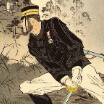

p.thumb.jpg.f6680464f3c7322002703e8bc0642d46.jpg)

.thumb.jpg.46ffa9fe41309fe4a1387c11e968f05c.jpg)
